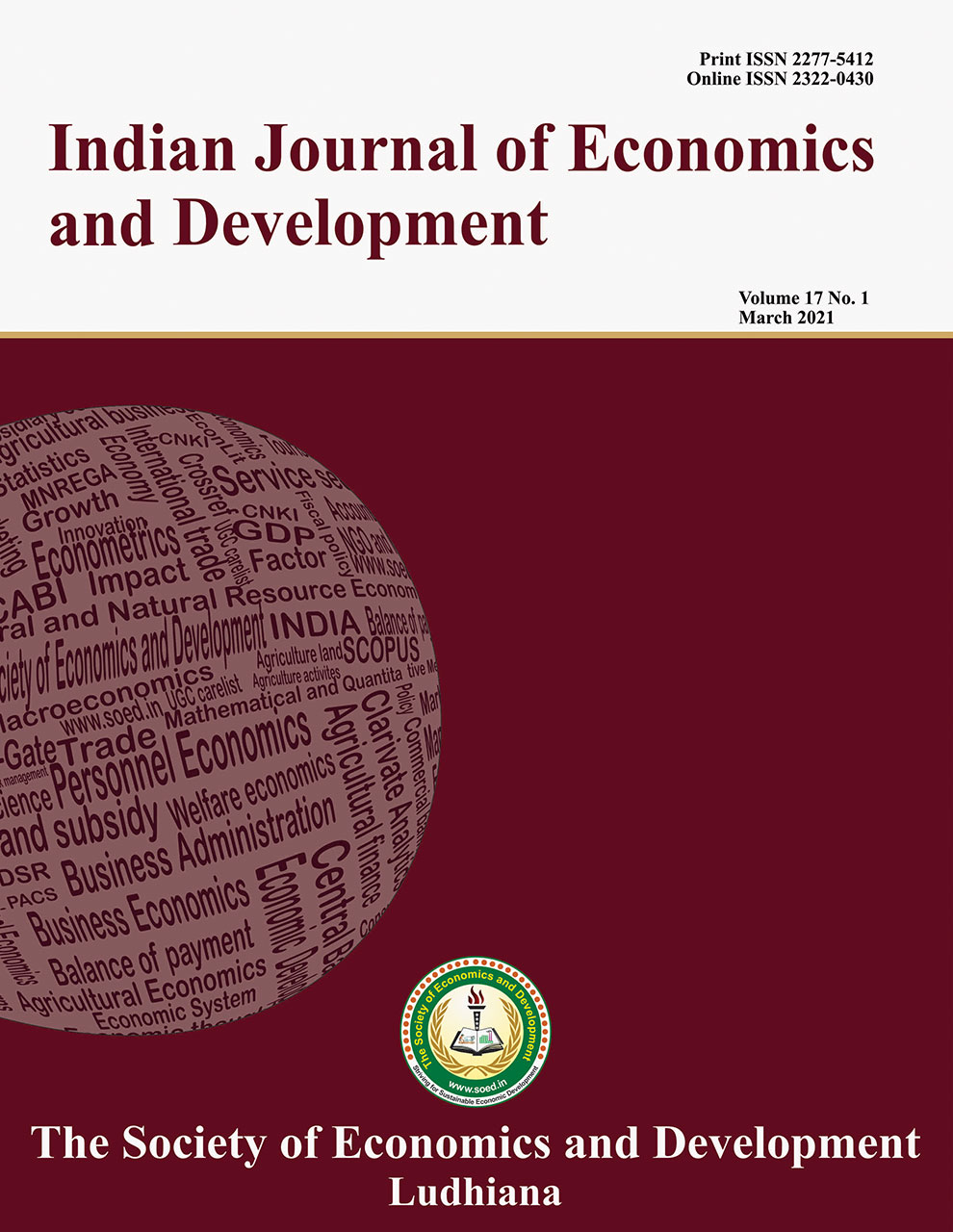Economic Comparison of Pomegranate Production with Darakshak (Bioconsortium) and Conventional Chemical use in Karnataka

Price: ₹ 1000
Author: M.G. Kerutagi, A.S. Pavithra and G. Manjunath
Author Address: Department of Social and Allied Sciences Agricultural Economics, University of Horticultural Sciences Bagalkot- 587104 (Karnataka)
Keywords: Constraints, opinion, pomegranate production.
JEL Codes: C82, Q12, Q16, Q18.
Abstract
Pomegranate production with Darakshak and conventional chemical use in Karnataka (2017-18) revealed that per acre annual cost of cultivation of pomegranate was less in Darakshak users (`1,10,347) than conventional chemical users (`1,21,342 ). Fruit yield increased by 13.5 percent to the Darakshak users (6.750 tonnes) compared to conventional chemical users (5.838 tonnes). Darakshak improved the fruit quality and reduced the fruit cracking problem. Hence, Darakshak users received higher returns than chemical users. The majority of the farmers expressed that bacterial blight was the major production problem followed by irrigation, and decreasing yield. Pomegranate producers opined that Darakshak is more effective on blight disease besides improving the crop health, and quality of the fruit. Conventional chemical users expressed that the usage of chemicals harmed human health followed by the incidence of water pollution. It contaminated in the soil and reduced soil fertility.
Description
Indian Journal of Economics and Development
Volume 16 No. 2, 2020, 271-277
DOI: https://doi.org/10.35716/IJED/19093
Indexed in Clarivate Analytics (ESCI) of WoS
M.G. Kerutagi, A.S. Pavithra and G. Manjunath
Department of Social and Allied Sciences Agricultural Economics, University of Horticultural Sciences
Bagalkot- 587104 (Karnataka)
Corresponding author’s email: mgkerutagi@yahoo.com



